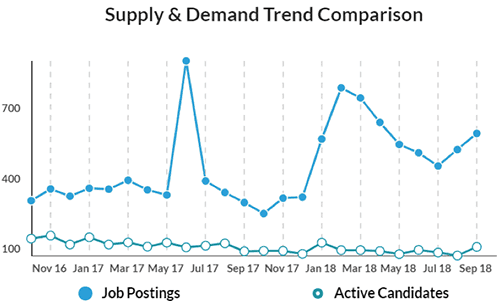Considering that the Bureau of Labor Statistics says 2.7 million people are classified as B2B salespeople in our country, why does it take so long to fill open sales talent positions? Just as important, why do so many managers merely settle on a hire after waiting for months and reviewing countless mediocre performers?
To add to the problem, every week, month, and quarter that passes with an unfilled sales opening is costing significant lost revenue, damaging the customer experience, and hurting the brand in the marketplace, why do so many companies refuse to examine and modify their recruiting efforts?
The answer may be in the approach. Most organizations try to hire salespeople following the same methodologies they follow when hiring non-sales related roles. You can’t effectively fill open sales roles using these traditional routes. Consider the following major challenges companies face when attempting to woo top sales talent.
Job Postings
Quota crushers don’t apply for jobs. They are busy crushing their quotas, calculating their commissions, and going on their current company’s incentive trips. They are prospecting, pitching, and closing.
One of the nation’s leading job boards reported that only 31,334 candidates viewed or applied to their more than 568,417 B2B sales postings. Remember the stat from the Bureau of Labor Statistics of 2.7 million B2B sellers in the U.S.? This means that only 1.16% of those salespeople are looking at job postings on this national job board. It’s doubtful other job boards are faring much better.
While there may be a superstar in that sample, the most likely case is these are the underperformers in their current roles. Candidates looking to make a move because they see the writing on the wall, as they struggle through yet another quarter of missing their number with their current company. Not exactly the type of people I suspect you want on your sales team.
Internal Talent Acquisition
For most organizations, their internal talent acquisition teams just aren’t equipped to effectively fill sales-related openings. Again, the challenge being that more traditional methodologies just don’t work in attracting top sales talent. It’s likely that a big component of internal talent acquisition staff strategies include posting on job boards, and I’ve already noted the futility of that approach.
Most internal talent acquisition teams are also tasked with filling all other roles within the organization—often with those openings numbering in the hundreds. Those internal resources will typically spend more time on roles they better understand and perceive to be easier to fill. For example, roles that a job description can fully describe and a keyword match can successfully differentiate and roles that have a high hit rate of applicants per posting (which are not sales-related roles).
Great sales talent will have many questions about your sales strategy, territory alignment, and earning opportunity, including detailed commission structure, average sales cycle, quotas, and percentage of current team at plan. They will also want to be “sold” on your opportunity, seeking a better understanding of your employee value proposition, your leadership style, and your organization’s culture. Do you have confidence that your current internal talent acquisition team can effectively hit the mark in these areas?
Sales Leaders Doing It Themselves
Often, great sales leaders become so disheartened by their lack of a robust pipeline of sales talent, they resort to just trying to do it themselves. While this approach works better than the other two mentioned, it also has significant challenges. Most notably, the more time you as a sales leader spend on sourcing, recruiting, and candidate pipeline management, the less you have available to do the things you are best at—leading, coaching, and developing your current sales staff.
The candidates you want are the top performers out there, and they are, at best, passive in their search. They require an investment in time to find; build and nurture a relationship; screen for a match of skills, experience, and cultural fit; and align to your organization’s strategy and employee value proposition. Done correctly, it’s exhaustive work that requires a huge amount of time, which would be better served working on core sales leadership responsibilities.
Time to Re-Think Your Strategy?
As experts who focus exclusively on placing salespeople and sales leaders, our sales direct placement division can help address all of these challenges. We seek out the best talent and work as the intermediary between sales leadership and human resources to find the right fit for your sales position.
We succeed because our team is comprised of experienced salespeople and sales leaders, so we understand our clients’ unique challenges, as well as our candidates’ needs. Find out how we helped an IT firm quickly decrease its time-to-fill for strategic sales roles in this case study and contact us today.


